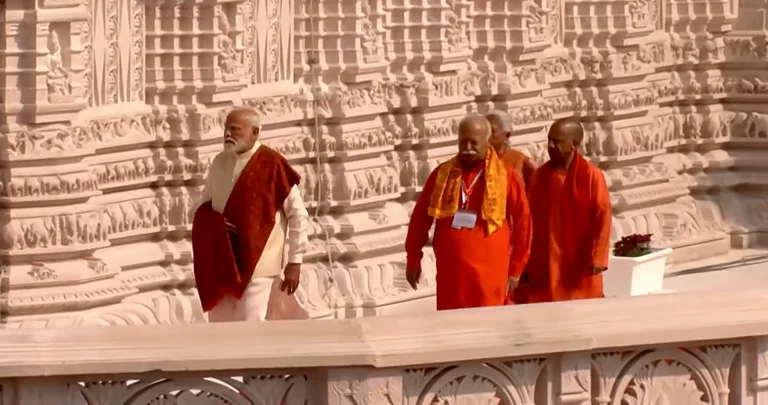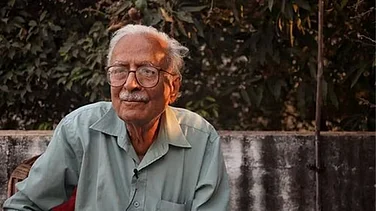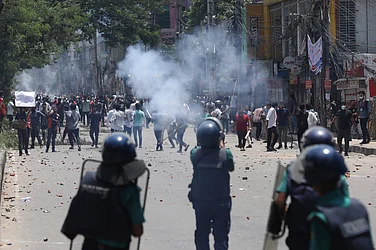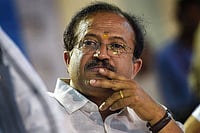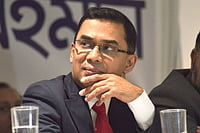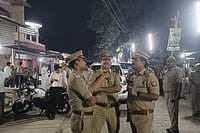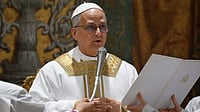Following the consecration ceremony of the Ram Mandir, Prime Minister Narendra Modi addressed the nation from Ayodhya on Monday, marking what he called “the dawn of a new era”. Modi’s address, which hinged on the idea of faith, turned into a launch pad for his Lok Sabha campaign for a united effort in nation-building. As he appealed to the masses calling it a historic day for everyone in this country, the prime minister said, “Ram sirf hamare nahi hai. Ram to sabke hai (Ram does not belong to only us, but everyone).”
He projected Ram Temple as a symbol of national consciousness, and mentioned how “even the first draft of the Constitution had a mention of Ram”. Modi said this occasion is not of mere triumph but of humility. The Ram Temple will be witness to the dawn of a prosperous and developed India, he said.
Over the past few years, there has been a rise in BJP’s attempts to woo Dalit and Adivasi voters in their election campaigns. Interestingly, the speech comes just a couple of months ahead of the Lok Sabha elections and several critics have said that with Ram Mandir, BJP is once again trying to address Dalit and Adivasi communities.
Modi made references to characters from Ramayana to stress how every Indian has much to learn from them. Mentioning the character of Shabri, the Adivasi mother, Modi cited how she used to say, 'Ram will come' and said that the same faith is inherent in Indians. Meanwhile, mentioning Nishad Raj–considered to be lower caste–Modi highlighted his friendship with Ram and how he helped Ram and Sita to cross Ganga in his boat. He further said that even smaller characters in Ramayana, like the squirrel, played a significant role in the construction of Ram Setu, reaffirming the idea of unity in nation-building.
These citations also come in the backdrop of an ongoing debate around the selection of a black idol for Ram Lalla at the temple, which, coupled with other efforts like Modi’s recent visit to the OBC household of Meera Manjhi, has been seen as the BJP’s repeated attempts to appeal to the marginalised communities.
This also brings to focus the historical debate between Mahatma Gandhi and Dr BR Ambedkar at the Round Table Conference in 1931, when Gandhi had opposed the idea of Dalits, or any other section within the Hindu community getting a separate electoral representation. “That would be politically suicidal,” he had told Ambedkar. Gandhi, who became the symbol of uniting the Hindus under one umbrella, became the reason, later, that Jaipal Singh Munda failed to get a separate constitutional recognition of Adivasi people. The Dalit and Adivasi communities have for long fought for their right to a separate electorate, but the 1990s saw the birth of a new politics on the lines of social justice versus communalism – Mandal versus Kamandal politics – reinstating the idea of the united Hindu fold, to bring the Dalits and Adivasis under the same fold. This very idea became the basis on which the Ram Temple was created.
In his speech, Modi held that the country is united by a devotion to Lord Ram. He also referred to the many temples he visited in South India. "I got the opportunity to travel from "Sagar" (in this context, the Indian Ocean) to Saryu (the river in Ayodhya). From Sagar to Saryu, the same festive spirit of Ram's name is visible everywhere," he said, in an apparent outreach to the areas in South India where the BJP has not been able to gain ground so far.
At noon today, PM Modi broke his 11-day fast after taking part in the consecration ceremony inside the sanctum sanctorum of the grand Ram Temple made possible by a historic Supreme Court judgment in 2019 on the Ram Janmabhoomi-Babri Masjid title suit. The temple, built in the traditional Nagara style of architecture, spans 380 feet in length (east-west), 250 feet in width and 161 feet in height. It is supported by 392 pillars and has 44 doors.
Even as critics accused Modi of a hurried opening to woo the voters, the grandeur and widespread celebration of the inauguration of Ram Temple, have raised hopes for the BJP that it will catapult into a record third successive term for the prime minister.










